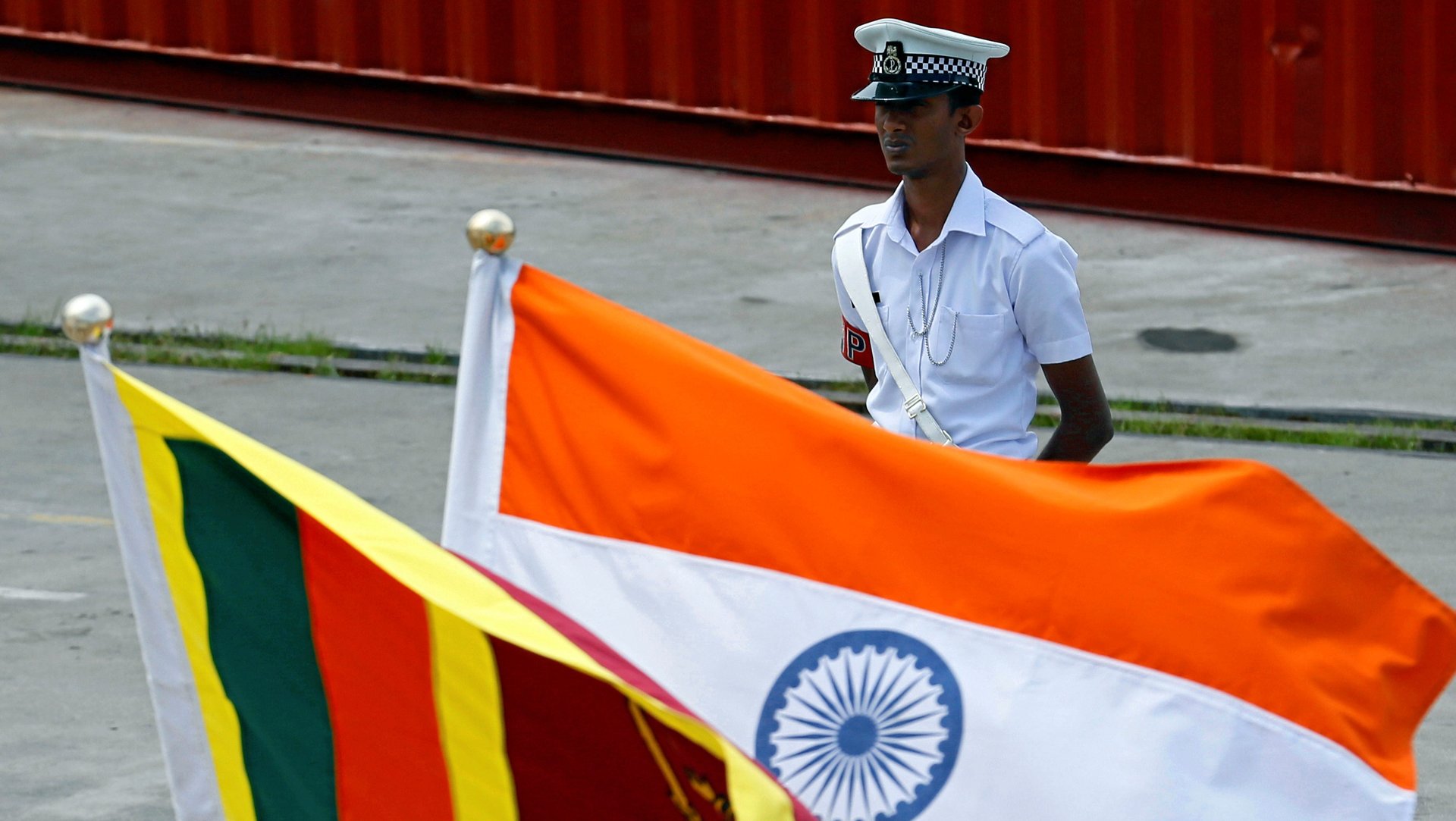In crisis-hit Sri Lanka, India holds all the cards
A prime minister overthrown, a besieged president, a central bank exhausted of dollars, and a people gobsmacked by an unprecedented economic crisis. Everyone has lost something in Sri Lanka.


A prime minister overthrown, a besieged president, a central bank exhausted of dollars, and a people gobsmacked by an unprecedented economic crisis. Everyone has lost something in Sri Lanka.
There’s been only one beneficiary: India.
Sri Lanka now increasingly depends on its northern neighbour for basic stuff like fuel, medicine, and food items. The country has already been extended credit lines and currency swaps worth over $3 billion by India. New Delhi also continues to defer seeking repayment of at least $2 billion in dues owed through the Asian Clearing Union.
India has played a shrewd game till now and ended up with an exceptionally good hand, radically improving its bargaining power in Colombo.
It recently sought a rapid finance instrument from the IMF on Sri Lanka’s behalf. This was extremely unusual, observers said.
More importantly, India has also quietly been plucking the fruits of its efforts.
India and Sri Lanka sign many deals
In the past few months, Sri Lanka has finalised an agreement to share ownership of the British-built Trincomalee oil tank farm with the IndianOil Corporation (IOC). India has sought such a deal for decades.
India’s National Thermal Power Corporation is also going to develop a 100-megawatt power plant in Sampur, a strategic point at the Trincomalee’s natural harbour. This will give India further access to one of the best such facilities in the world.
In the past year, the Adani group has also been given a licence to develop and operate a port terminal in Colombo. This will be the first Indian-owned-and-operated terminal within the Colombo port complex, South Asia’s largest.
Under Indian pressure, Sri Lanka cancelled a Chinese company’s licence to build a micro electricity grid close to India. Needless to say, China was furious.
In another crucial development, India and Sri Lanka have decided to establish a joint Maritime Rescue Coordination Center (MRCC). It will strengthen Sri Lanka’s maritime disaster management capability, besides deepening the cooperation between the two countries’ navies and security apparatuses.
The MRCC will have posts set up in every large Sri Lankan port and harbour, including Hambantota, which has considerable Chinese investment.
China dumps Sri Lanka
Only a few years ago, India appeared to have been completely outmanoeuvred in this arena, with China emerging as Sri Lanka’s key strategic partner. Beijing was, till recently, providing the bulk of its foreign investment, loans, and expertise for ambitious infrastructure projects.
Chinese companies signed enormous deals in Sri Lanka to build and manage major ports like the ones in Colombo and Hambantota. This deepening friendship, scaffolded by Chinese state-linked companies, was deemed a strategic threat to India.
The unravelling of Sri Lanka’s economy—Chinese loans had little to do with this, popular notions aside—has, however, led to an abrupt and inexplicable dissipation of Chinese backing.
While China has been willing to roll over Sri Lankan dues, it has failed to offer fresh loans or any significant aid.
With its engagement with China and Japan now limited, Sri Lanka is now left with only India as a full-fledged ally, given that the crisis-hit nation approached even the IMF extremely late.
On its part, India simply cannot afford to have its neighbour collapse into poverty and hunger. The humanitarian factor aside, stepping in with help provides it considerable leverage on the island.
Sri Lankans are now silently accepting “Indian influence”
While a sense of disquiet about all this is palpable among both the general population and the country’s strategic affairs community, what’s revealing is that there has been no overt opposition to India gaining leverage.
Otherwise, at the best of times, Sri Lanka has been suspicious about its bigger, more powerful neighbour’s moves.
“Over the past couple of decades, the key questions facing the Sri Lankan state have been internationalised due to comprehensive failures in domestic policy; economic policy is now determined by an IMF programme, inter-ethnic relations operate within the framework of a UNHRC resolution and our foreign policy is at the mercy of a couple of countries,” said Daniel Alphonsus, former advisor to the Sri Lankan finance ministry.
“Medicine, food and electricity are available because of Indian assistance.”
Shehan Wanidu Pieris, a student protesting at Galle Face, the epicentre of the ongoing countrywide protest in Colombo, was more direct.
“We have bent over for the Indians. If they ask the president for the clothes off his back, he has to give them up, that’s how it is.”
Yet, such disapproval is being viewed as mere posturing. Being pro-Indian isn’t exactly a feather in the cap among Sri Lankans, so hardly anyone openly approves of Indian help during this crisis. One observer, who didn’t want to be identified, pointed to the country’s Buddhist monk community to gauge the mood.
These monks, who have been traditionally influential among the populace and government, usually seethe at any indication of “Indian influence.” This time, however, they have been strangely silent.
Sri Lanka is increasingly struggling to administer itself. And India offers both capital and administrative capability, making it a very tempting partner.
But how far is India itself willing to go? More importantly, how can it extricate itself if things go off the cliff?
This is the final article in a three-part series on the economic crisis in Sri Lanka. Read the other two here. We welcome your comments at [email protected].